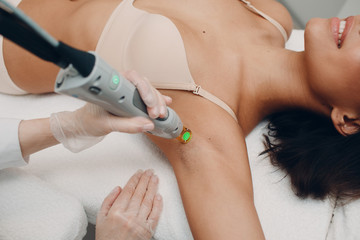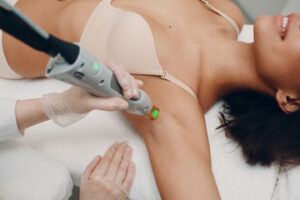Recently, there has been a growing interest in fluoride-free toothpaste as an alternative to conventional toothpaste containing fluoride. While fluoride has long been touted for its benefits in preventing tooth decay, some individuals prefer to avoid it due to concerns about potential health risks associated with excessive fluoride exposure. 
Flouride Free Toothpaste is formulated without fluoride, a mineral commonly added to toothpaste and water supplies in preventing cavities. Instead, fluoride-free toothpaste relies on other active ingredients to clean and protect the teeth and gums.
Suitable for Certain Populations: Some individuals, such as young children who are prone to swallowing toothpaste or those with fluoride allergies, may benefit from using fluoride-free toothpaste. For these populations, fluoride-free options provide a safe and effective alternative for maintaining oral health.
Natural Ingredients: Many fluoride-free toothpastes are formulated with natural ingredients such as baking soda, calcium carbonate, and essential oils. These ingredients work together to gently clean the teeth and gums without the use of artificial additives or chemicals.
Reduced Risk of Fluorosis: Fluorosis is a condition that can occur from overexposure to fluoride during tooth development, leading to discoloration or mottling of the teeth. By using fluoride-free toothpaste, individuals can reduce their risk of developing fluorosis, particularly in areas where fluoride is already present in water supplies.
Safe for Certain Dental Conditions: Some dental conditions, such as enamel hypoplasia or dental fluorosis, may require fluoride-free oral care products to avoid exacerbating the condition. Fluoride-free toothpaste provides a gentler option for individuals with sensitive teeth or underlying dental issues.
Eco-Friendly Options: Many fluoride-free toothpaste brands prioritize sustainability by using recyclable packaging and natural ingredients sourced from responsible suppliers. By choosing fluoride-free toothpaste, consumers can support brands committed to environmental stewardship.
While fluoride-free toothpaste offers benefits for certain populations, it may not be suitable for everyone. Individuals with a high risk of tooth decay or those who rely on fluoride for cavity prevention may still benefit from using conventional toothpaste containing fluoride. It’s essential to consult with a dental professional to determine the most appropriate oral care products based on individual needs and oral health status.
Fluoride-free toothpaste offers a natural and alternative option for individuals seeking to avoid fluoride in their oral care routine. With its natural ingredients, reduced risk of fluorosis, and suitability for certain populations, fluoride-free toothpaste provides a viable choice for maintaining oral health. However, it’s crucial to weigh the benefits and limitations of fluoride-free toothpaste and consult with a dental professional to make informed decisions about oral care products. Whether you choose fluoride-free or fluoride-containing toothpaste, regular brushing, flossing, and dental check-ups remain essential for maintaining a healthy smile.
Key Ingredients in Fluoride-Free Toothpaste
Fluoride-free toothpaste formulations often feature a combination of natural ingredients that work synergistically to clean, strengthen, and protect the teeth and gums. Some key ingredients commonly found in fluoride-free toothpaste include:
Baking Soda: Known for its mild abrasive properties, baking soda helps remove surface stains and neutralize acids in the mouth, promoting a fresher, cleaner feeling. Its gentle nature makes it suitable for individuals with sensitive teeth or gums.
Xylitol: This natural sugar substitute not only adds sweetness to toothpaste but also helps inhibit the growth of cavity-causing bacteria. By reducing bacterial proliferation, xylitol contributes to a healthier oral environment and helps prevent tooth decay.
Calcium Carbonate: Derived from limestone, calcium carbonate serves as a gentle abrasive in fluoride-free toothpaste formulations. It aids in removing plaque and polishing the teeth without causing damage to the enamel, promoting a brighter, smoother smile.
Essential Oils: Peppermint, spearmint, and other essential oils are commonly used in fluoride-free toothpaste for their refreshing flavors and antibacterial properties. These oils help freshen breath and combat oral bacteria, contributing to improved oral hygiene.
The Rising Popularity of Fluoride-Free Toothpaste
The increasing popularity of fluoride-free toothpaste can be attributed to several factors, including growing consumer awareness, changing attitudes towards health and wellness, and advancements in natural oral care products. As individuals become more educated about the potential risks associated with fluoride and the benefits of natural ingredients, they are seeking out fluoride-free alternatives that offer effective oral care without compromising on safety or efficacy.
Furthermore, the rise of the clean beauty and wellness movements has fueled demand for fluoride-free toothpaste among consumers who prioritize natural, non-toxic products. These individuals are seeking oral care solutions that align with their values of sustainability, transparency, and holistic well-being. Fluoride-free toothpaste fits seamlessly into this ethos, offering a clean and conscientious option for maintaining oral health.
Additionally, advancements in formulation technology have led to the development of fluoride-free toothpaste options that rival their fluoride-containing counterparts in terms of effectiveness and performance. Manufacturers are leveraging innovative ingredients and manufacturing processes to create fluoride-free toothpaste formulations that deliver superior cleaning power, cavity protection, and breath freshening benefits.
Fluoride-free toothpaste represents a compelling alternative for individuals seeking to prioritize their oral health in a natural and holistic manner. With its emphasis on natural ingredients, reduced fluoride exposure, and suitability for individuals of all ages, fluoride-free toothpaste offers a safe, effective, and eco-friendly option for daily oral care. As consumer awareness continues to grow and demand for natural oral care products increases, fluoride-free toothpaste is poised to become a mainstay in the oral care landscape. By embracing fluoride-free toothpaste, individuals can take proactive steps towards safeguarding their smiles while staying true to their values of health, wellness, and sustainability.
Considerations When Choosing Fluoride-Free Toothpaste
While fluoride-free toothpaste offers a myriad of benefits, consumers should consider several factors when selecting the right product for their needs:
Oral Health Needs: Individuals with specific oral health concerns, such as cavity prevention, sensitivity relief, or gum care, should choose fluoride-free toothpaste formulations tailored to address their unique needs.
Ingredient Sensitivities: Those with allergies or sensitivities to certain ingredients should scrutinize product labels and opt for fluoride-free toothpaste formulations free of potential allergens or irritants.
Quality and Efficacy: When evaluating fluoride-free toothpaste options, consumers should prioritize products backed by scientific research, clinical studies, and positive customer reviews to ensure efficacy and reliability.
Dentist Recommendations: Seeking guidance from a dental professional can provide invaluable insights into the most suitable fluoride-free toothpaste options based on individual oral health status, concerns, and preferences.



